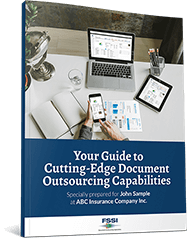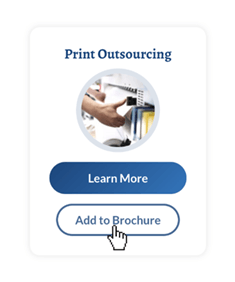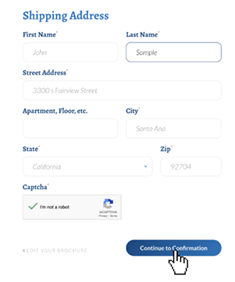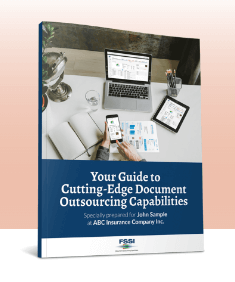Glossary of Printing Terms

Glossary of Printing Terms and Graphic Design Terminology
A | B | C | D |
E | F | G | H | I |
J | | K | L| M | | N | O | P | Q |
R | S | T | U |
V | W | X | Y | Z
A
Achromatic – This a designating color perceived to have zero saturation, meaning no hue. These are colors like neutral grays, white, and black. It is the refracting of light without color separation.
Acetate – Acetates are used to print on a film. It is used when printing on transparency for overhead projectors.
Accordion Fold – This a type of document folding method that uses a series of alternating folds to create multiple panels of similar size. The resulting sections resemble the expandable part of an accordion.
Additive Color – Additive color is produced by mixing several different light colors, it is the foundation of RGB, the main colors used are red, green and blue.
Against the Grain – Printing at right angles to the direction of the paper grain causes folding problems. A way to work around folding against the grain is to score the paper before folding.
Aqueous Coating – Aqueous coating is a clear, quick-drying water-based coating that is used to protect a wide variety of printed pieces. It protects against fingerprints, it can either have a high-gloss or matte surface finish.
Artwork – The artwork is the physical materials, including photos, images, text and other components of a printed piece. It also refers to the digital components need to produce both a printed or electronic document.
Autochrome Paper – Coated papers that are regarded as exceptional for multi-colored printing jobs
Automated Mail Inserter – High volume inserters, help stuff thousands of envelopes at very high speeds. Some models can process and produce mail at speeds up to 26,000 pieces per hour.
B
Bitmap (BMP) – A picture made from a series of small dots that are called pixels. Bitmaps include images created with paint programs, images downloaded from a digital camera, and images scanned into a program with a scanner.
Banker’s Flap Envelope – Also known as wallet-flap envelopes, a banker’s flap envelope is an extra-long envelope with a long deep flap and a wide area of space used mostly by investment firms, banks, and other financial institutions. Bankers flap envelopes offer more reliable document protection than other envelopes.
Binding – Transformation of an image or object to a defined color space.
Bitmap Vs. Vector – Bitmap: A dot-matrix data file structure representing a rectangular grid of pixels, or points that are assigned individual colors to draw an image. Bitmaps and raster graphics are resolution-dependent. They cannot scale to another resolution with loss of apparent quality.
Vector: A vector is an image built from paths or strokes via control points. Vectors are not affected by size or resolution because all of the information resides in the structure. The file only contains the data necessary to draw the image on the output device.
File sizes: Vector=180 Kilobytes Any resolution, any color Bitmap=650 Kilobytes at 600 DPI grayscale
Blanket – The blanket is a thick rubber sheet that transfers ink from the plate to paper on an offset printing press.
Bleed – In the print industry bleed is printing that goes beyond the edge where the sheet of paper will be trimmed. Bleed is the area to be trimmed off. The bleed is the part on the side of the document that gives the printer a small amount of space to account for the movement of the paper, and design inconsistencies.
Blend Emboss – A design or bas-relief impression that is made without using inks or metal foils.
Blistering – While you may think that paper is dry, a piece of paper contains approximately 5% moisture. In cases where there is excessive moisture and the paper is passed through a high heat-drying chamber, the moisture with the paper boils and causes a bubble and blistering effect.
Bond – Bond is a grade of durable writing paper that is used for printing, typing and it has a standard size of 17×22.
Brightness – Brightness is the percent of light reflected from a sheet of paper. It is measured by a light meter reading. (A perception of white paper)
C
Caliper – Caliper is the measurement of the thickness of paper, expressed in thousandths of an inch.
Chroma – Chroma is the purity or intensity of color. It is also referred to as saturation.
CMYK – CMYK is the abbreviation for the four primary colors used in four-color process printing consisting of cyan (light blue), magenta (a pink-purple) and yellow and black.
Color Balance – In photography and image processing, color balance is adjusting the intensity of colors usually red, green, blue and other primary colors. It is used to render neutral colors. It is also referred to as gray balance, neutral balance, or white balance.
Color Correction – Color correction is the process using lighting that used color gels and filters to alter the overall color of the light or pigment.
Color Gamut – Color gamut describes the range of color within the spectrum of colors visible to the human eye. The way that different devices reproduce color varies from device to device including digital cameras, scanners, monitors, printers, tablets, and projectors.
Color Separations – The process of preparing the artwork, photographs, transparencies or computer-generated art for printing by separating color into the four primary colors: cyan, magenta, yellow, and black.
Commercial Printer – Commercial printers are different than normal printing because the printer is the business itself, and its employees are printing professionals. A commercial printer is a printing company that prints a file using one of a variety of methods, often involving a printing press. The printing method to be used affects how the digital file must be prepared. Commercial printers usually require very specific file preparation or prepress tasks.
Cutting Machine – Printing machines allow you to print and cut all in one step with only one machine, saving you time and effort in large scale printing projects.
D
Data Compression – Managing large amounts of data takes processing power and memory. This is where data compression helps. In signal processing data compression, source coding, or bit-rate reduction involves encoding information using fewer bits than the original representation. Compression can be either lossy or lossless. Lossless compression reduced bits by identifying and eliminating statistical redundancy.
Deckle Edge/Feather Edge – The deckle edge is the ragged feathered edge on a piece of paper. Traditionally deckle edges were only found on mold-made paper that was made manually using pulp and a special frame. But with modern technology artificial deckle edges can be produced. A feathered edge gives the paper a more old-world feel. The type of paper is seen mostly on fine art paper like watercolor paper.
Density – Density refers to the perceived darkness of a substance, material or image caused by the absorption. Differences in density in relation to color are known as gray levels.
Density Range (Paper) – In printing, any non-uniformity in the density of a printed image, resulting from fading, discoloration, incomplete ink coverage, or other causes.
Digital Printing Vs. Offset – Digital printing doesn’t use plates the way offset printing does, but in its place uses toner and liquid ink. Digital printing is best used when lower quantities are needed. Another benefit of digital printing is variable data printing capabilities. This allows you to print unique codes, names, or addresses on each printed piece. Offset printing is a print solution for larger-scale jobs when printing high quantities of the same piece.
Digital Proofing – Proofs are made of digital files, rather than physically printing the proof. Digital proofs are less expensive than press proofs, but cannot be used to check color accuracy. There are several types of digital proofs including, onscreen proofs, desktop laser or inkjet proof, PDF, bluelines also called dylux and high-end color digital proofs.
Dot Gain – Dot gain also referred to as tonal value increase, happens in offset printing and other forms of printing and lithography when the printed material appears darker than originally intended. Dot gain is caused by halftone dots appearing between the original printing film and the final printed output.
Dots Per Inch (DPI) – Dots Per Inch, also referred to as DPI is a measurement in print layout, video, or image scanner dot density of the number of individual dots that can be placed in a line in the span of one inch. It is known as the resolution on digital screens or is an indicator of the print quality of a printed piece.
Dry Back (Print) – Dryback is a decrease in the gloss of ink during drying. The gloss level of printing ink is related to the thickness of the ink, the ink absorbency of the paper and the gloss of the paper. Dryback increases with increased penetration of the ink vehicle into the paper, which makes the ink dry faster than it should. Dryback can be avoided by ensuring that the paper’s absorbency allows the proper amount of time for ink drying.
Duo-Tone – Duotone relates to the halftone reproduction of an image using the superimposition of one contrasting color halftone over another color halftone. This is most often used to bring out middle tones and highlights of an image.
Duplex Paper – Duplex paper is used mostly for the printing of decals. The paper has a thin water-absorbent tissue of laminated onto a heavier stock. Duplex paper has a different finish or color on each of its sides. Related: Duplex printing is a feature of some printers that allows you to print on both sides of the page automatically.
E
Electronic Image Assembly – Electronic image assembly, commonly referred to as image stabilization, is a technique that reduces blurring associated with cameras, or other imaging devices during exposure. It can be found on binoculars, most cameras, video cameras, telescopes and even on some smartphones. Electronic image assembly is an image stabilization method that helps with “camera shakes” involved with a moving camera or subject being filmed.
Encapsulated PostScript File – An encapsulated postscript file, more commonly known as an EPS file, is a file extension for a graphics file that used vector images from Adobe Illustrator. An EPS file can contain text, as well as graphics. Most EPS files contain a bitmap version of the image for simpler viewing rather than the vector instructions to draw the image.
F
Fast Color Inks – Fast color inks are used when a print job requires a fast-drying process. This prevents smudging and multi-faceted print jobs with multiple different elements placed on one page.
Fibers – Papers made up of fibers that are arranged in a specific direction and density creating a grain direction in the substrate
Fine Papers – Fine paper types are pieces of printing and writing paper grades made up of chemical pulps. Some of the common types of fine paper in this grade are bible paper, coated fine paper, inkjet paper, thermal paper, and woodfree uncoated paper. There are also broken down into these five categories: text, cover, writing, 25% & 100% Cotton Bond, and No. 1 Bond Watermarked.
Fixed Costs – Fixed costs are constant business costs that do not change based on sales or the number of goods being produced. This includes costs like rent, insurance, interest expense, utilities, property taxes, salaried employees, and other resources. Fixed costs combined with variable costs (expenses that change in proportion to production output) make up your total business expenditures.
Format – Format, in relation to printing, is the blueprint for printed output, it defines the character, and line spacing of the areas of the page to be printed.
Full-Scale Black – Full-scale black concerning electronics and signal processing is the maximum level of black that can be presented in a system. In digital systems, a signal becomes full-scale when its magnitude has reached its highest level.
G
Gate Fold – A gatefold is a document folding technique that uses two parallel folds to create six panels, with three panels on each side of the paper. The left and right panels are half the width of the center panels and fold inward to meet in the middle without overlapping. The gatefold is used in brochures to showcase a large interior image with the information printed on the side door-like panels.
Gloss – The term gloss is used to depict that degree of shine on a printed ink. Some of these inks become glossier when the dry. The paper quality affects this quality, and the glossiness comes from when the light hits the paper’s surface, the orientation of the reflected light determines a paper’s gloss.
H
Holdout – Holdout refers to the property of ink remaining on the surface of the paper rather than soaking in.
Hue – Hue is a color or shade. It is an attribute of color for example, red, green, etc. It is dependent on its dominant wavelength and the intensity of light.
I
Intensity – Intensity also referred to as chroma or saturation is a reference to the brightness of a color. Color is at full intensity when not mixed with black or white. You can adjust the intensity of color making it duller by adding gray to the color.
J
Jogger – A machine that uses vibration and a slopping platform to even-up stacks of printed materials.
Justification – Adjusting the spacing and hyphenation of words and the characters to fill a line of text from end-to-end. Also known as word spacing.
K
Key Lines – Lines on a mechanical or negative showing the exact size, shape, and location of images or other graphical elements.
Kraft Paper – Kraft paper is a strong durable paper used for wrapping and also used to make grocery bags, and large envelopes.
L
Laminate – A thin transparent plastic sheet or coating that is applied to the thicker paper stock. Usually is applied to covers, postcards, and other thicker documents. It protects liquids and accents existing colors while providing a glossy finish.
Layout – A sample of the finished work showing the positions and placements of text and visual elements on a printed document.
Letter Fold– Two folds creating three panels that allow a sheet of letterhead to fit a business envelope. Also called barrel-fold and wrap-around-fold.
Luminance/Value – Luminance is the intensity of light emitted from a surface area in a given direction. It describes the amount of light that passes through, is emitted or reflected from a particular area, and falls within a given solid angle.
M
Margin – The margin is the space around the edges of a printed document
Match Print – Match print is a form of a four-color process proofing system.
Matte Finish – A matte finish is flat unlike a glossy finish like a photograph.
Mock Up – A mock-up is a reproduction of the original printed documents and also sometimes contains instructions on how to produce the document.
N
Natural Color – Natural color is a very light brown color of paper, sometimes called cream, ivory, or off-white.
Nested – Nested refers to signatures assembled inside one another in sequence, also called insert.
Nonimpact Printing – Nonimpact printing involves the use of lasers, inkjets, or heat to transfer images and text to printed documents.
O
Offset Printing – Offset printing is a print method that transfers ink first from a plate, then to a blanket, then to paper opposed to directly from a plate to the paper.
Opacity – The measurement of the amount of light passing through a sheet of paper. (shine through and bleed through)
Orthochromatic – A black-and-white photographic film sensitive to all visible light except red. The orthochromatic film can, therefore, be handled in red light in the darkroom but does not produce black-and-white tones that correspond very closely to the colors seen by the eye.
Overlay – An overlay is a layer of material taped to a mechanical, photo or proof. Acetate overlays are used to separate colors by having some type of art on them instead of on the mounting board. Tissue overlays are used to carry instructions about the underlying copy and to protect the base art.
P
Panchromatic – Something that is panchromatic is sensitive to all colors of the visible spectrum.
Paperboard – Paperboard is a thick paper-based material. Paper board is also referred to as cardboard but includes other types of thicker than paper material.
Paper Grade – Paper grade is a measure of brightness on a scale of 0-100. There are six total grades.
Premium=88.0 and above
#1 is 85.0-87.9
#2 is 83.0-84.9
#3 79.0-82.9
#4 73.0-78.9
#5 72.9 and below
Perf/Perfing/Perforation – A process where little dots are cut along a printed document to make tearing it easier.
Primary Colors – The primary colors are red, blue, and yellow, each other these colors are the source of every other color that is produced. Being a primary color, these colors cannot be created by mixing other colors. Related: Secondary colors include orange, green, and violet.
Process Inks – Transparent in nature, this type of ink is meant for mixing to print 4 color process images, but should not be printed separately. As a part of the CMYK color model process color, also called four-color, is a subtractive color model used in the printing process.
Q
Quark – Stands for QuarkXPress which is a primary software application used in graphic design.
Quarto> – A quarto refers to one of two things, the first is a sheet folded twice, this makes each page about 1/4th of the original size. A quarto is also a book made up of these ¼ size sheets usually measuring 9X12.
R
Ream – A ream of paper is 500 (480 used to be the standard) sheets of paper. The ream is used to determine the bond paper’s weight.
Register – Register refers to the arrangement of two or more printed images in exact alignment with one another.
Register Marks – Register marks are any cross marks or other symbols use to assure the proper registration
Rendering Intent – Rendering intent defines how you get from the input profile to the output profile. It controls the color transformation between input and output profiles. There are a few types of rendering intent such as, perceptual which is photographic absolute, colorimetric, relative colorimetric, saturation.
RGB – RGB color is the use of red, green, and blue, which are the primary colors of light in which a computer uses to display images on your screen. An RGB computer file must be translated into the CMYK (the primary colors of pigment) color space to be printed on a printing press.
RGB Vs. CMYK – RGB = Red, Green, Blue. The RGB color system should be used only in digital designs, most commonly when designing for the web. This includes designing websites and imagery and graphics for use on websites and social media. CMYK = Cyan, Magenta, Yellow, and Key. CMYK is the recommended color system for any material that will be printed. This includes business cards, brochures, letterheads, and any other business collateral.
S
Saturation – Saturation is another term for the intensity of a color. Technically it is the expression of the bandwidth of light from a given source.
Scale – This is the percent to which images or other design elements should be enlarged or reduced to fit the correct size for printing.
Self-Mailer – A printed item that is sent without an envelope, for instance, a postcard, marketing mailer, etc.
Shade – A hue produced by the addition of black.
Smoothness – The smoothness of paper relates to the quality of the paper and is defined by the levelness that allows for consistency in printing. The higher the smoothness of a paper the higher the uniformity is in the print output.
Stock – Stock is a basic term for unprinted paper. There are many different types of paper stock.
Substrate – A term used to describe the base material upon which images will be printed.
T
Thermography – A printing process whereby slow drying ink is applied to paper and, while the ink is still wet, is lightly dusted with a resinous powder. The paper then passes through a heat chamber where the powder melts and fuses with the ink to produce a raised surface.
Tint – A halftone screen that contains all the same sized dots, or a diluted variation of a full-strength color.
Trim Marks – Marks placed on the printed sheet to indicate where cuts should be made.
Types of Light Sources – There are four main types of light sources.
-Daylight: Sunlight is full-spectrum light, it is a natural light source.
-Tungsten: Tungsten light is an artificial light source that emits heat and produces a “warmer reddish color. It is different from fluorescent lighting and strobe lighting in that it generates much lower heat,
-Fluorescent: Sources that rely on fluorescence have a different emission shape than thermal sources. Fluorescent light can be produced at all wavelengths but the distribution is different under this type of lighting compared to daylight.
-Low Light/Lack of Light: This is somewhat self-explanatory; it is the lack of a light source or a lack of a light source. It makes a big difference in color matching and photography.
U
Under Color Addition – The technique of making color separations to increase the amount of cyan, magenta or yellow ink in shadow areas. Sometimes abbreviated UCA.
Up – A term used to describe how many individual pieces can be printed on a larger sheet. Examples of up include two up, four up, etc.
UV Coating – UV Coating is a shiny durable high gloss coating that is applied to the printed stock. It is applied to the paper as a liquid and is finished and sealed with ultraviolet light.
V
Value – The shade (darkness) or tine (lightness) of color reproduction.
Variable Data Printing – Variable data printing is a type of printing in which on-page elements like graphics, text, or images are changed from one printed piece to the next. This is accomplished in real-time without stopping the print job. An example of variable data printing would be a set of personalized letters, each with the same basic layout, but with a different name, address and even different image on each letter.
Varnish – A clear coating added to printed material as a protective layer for improved scuff resistance and usually higher gloss.
W
Watermark – A translucent mark or image that is embossed during the papermaking process, or printed onto paper, which is visible when the paper is held up to the light.
Weight – Basic weight refers to the weight in pounds of a single 17”x22” ream of paper. (500 sheets)
Whiteness – The measure of a paper’s ability to reflect the colors of light evenly.
X
Xerographic Paper – Xerographic paper is paper design specifically to be used in copy machines. It is easy to scan and reproduces the most accurate copies.
Y
Z
Zip File – This is a compressed file format that archives one or more files into a smaller file size. This makes it take up less hard drive space and takes less time to transfer over the internet or in a network.



